Tv
“Stranger Things 3”: Flawed Feminism, Haunting Symbolism, and Monstrous Growing Pains
11 Jul, 19
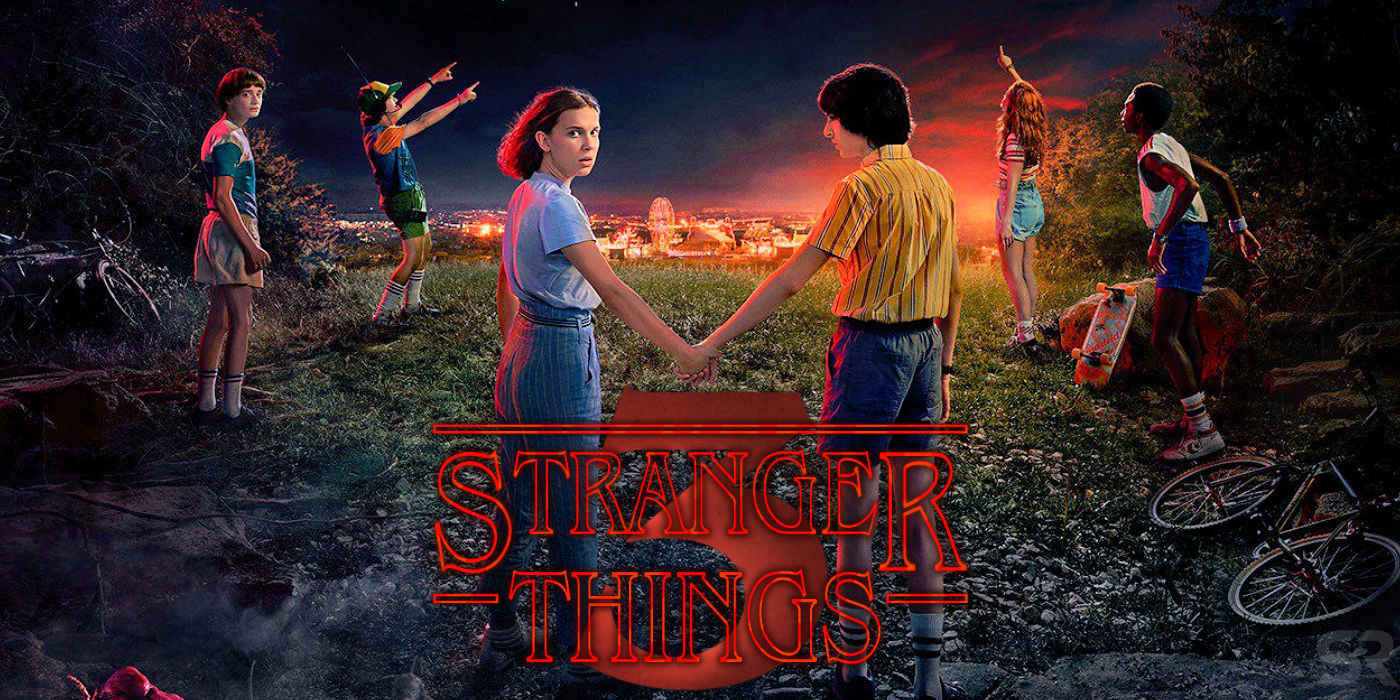
Netflix
[This review contains spoilers.]
Stranger Things made its name with its noirish, neon-lit aesthetic and its ability to dramatize ’80s nostalgia with the threat of impending doom.
Now, in season 3, that impending doom has arrived, in two separate but interconnected forms: the Mind-Flayer has officially moved into Hawkins, and the kids have grown up.
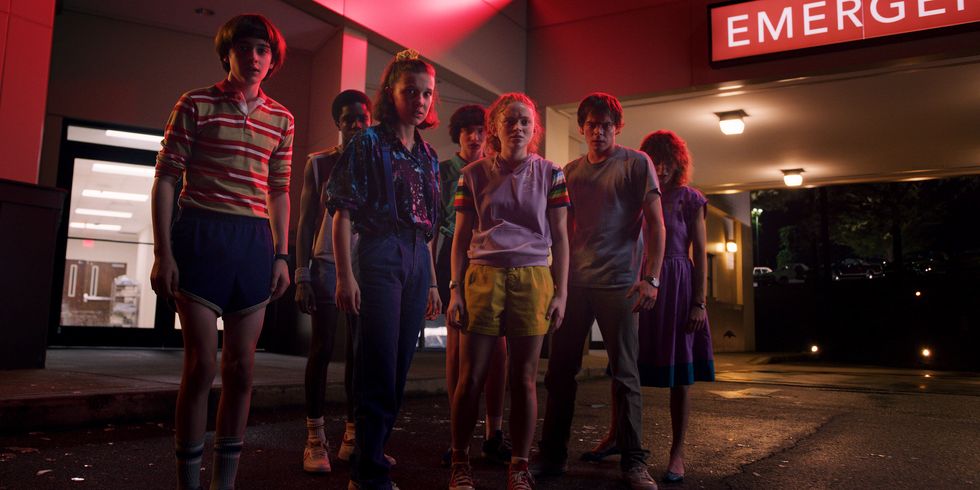 Netflix
Netflix
In its dedication to threading an honest depiction of coming of age with a thrilling tale of otherworldly monsters, the show is essentially the Harry Potter of Netflix. Yet unlike Harry Potter, which placed its characters in a totally separate universe, in Stranger Things, the alternate universe enters Hawkins—via a secret government operation that feels almost realistic, given the existence of things like MK-Ultra and the Russia-related threats that have plagued the modern era.
This duality—between the real and the fanciful, the past and the present—is both Stranger Things’ greatest strength and also, sometimes, the source of its flaws. Its habit of smashing hyper-realism together with monsters makes for a disorienting ride. Plotlines switch as rapidly as strobe lights, and sometimes you’re left with a sense of vertigo when the kids narrowly avoid death and then return to their ordinary basement hangouts. It’s chaotic, dramatic, and, at times, frankly absurd.
On the other hand, couldn’t the same be said for the experience of growing up?
Coming of Age, Through a Cracked Mirror
Stranger Things began when Mike and his friends were still prepubescent and absorbed in D&D. In its first and second seasons, it was largely a story about boyhood (though Eleven was always its star). Its third season shifts its focus to its female characters, but overall the show has consistently focused on common experiences, namely the fundamental strangeness (pardon the pun) of coming of age.
The passage of time affects everyone differently. Will, who spent the majority of the past two seasons being held captive, is slower to develop than his hormone-fueled friends. In a heartbreaking, rain-drenched sequence, he tears down his childhood playhouse, Castle Byers, after realizing that the days of playing D&D with his friends are gone forever.
Then there’s Eleven and Mike, pushed into a maturity beyond their years by Eleven’s trauma and Will’s devotion. Their budding relationship is effectively Romeo and Julietted by an enraged Hopper—who, in his emotionally frozen state, is as useless at communicating as any child. In spite of Hopper’s efforts, Eleven and Mike quickly discover that they love making out, and later, they discover that they are in love with each other. Despite their age, their love—communicated largely through unspoken signals between the very talented Millie Bobbie Brown and Finn Wolfhard—feels less like an unrealistic plot device and more like the real thing, in all its oddity. Their love feels clumsy and vast, almost as paralyzingly heavy as the realization that you’re being chased by a shadowy monster and knowing that you’re the only one with the power to take it on.
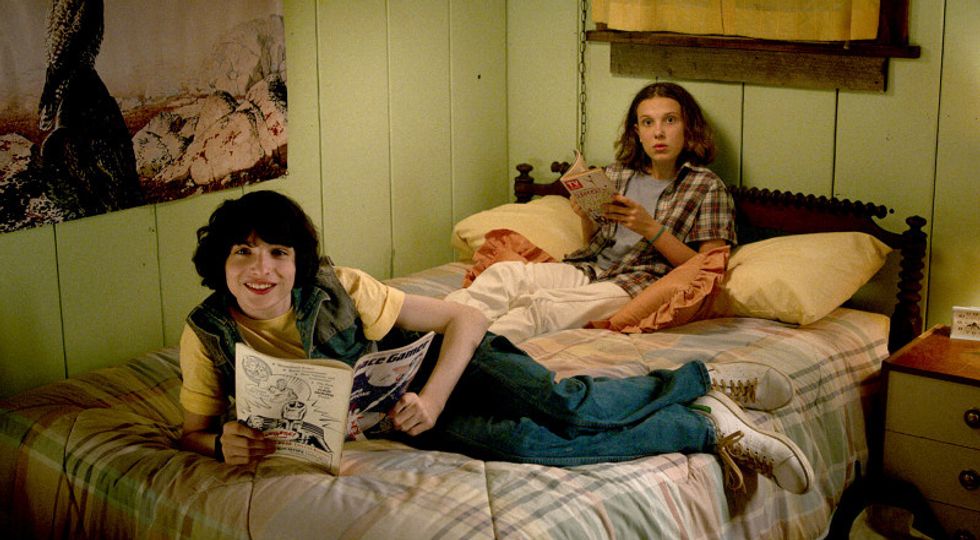 Netflix
Netflix
Essentially, Stranger Things is about major life changes like love and loss, but it sees them through a funhouse mirror. The show corroborates reality’s strangeness with the presence of life-threatening monsters and other worlds, which bend ordinary changes into carnivalesque shapes.
In the end, it’s all about growing up. Sure, the Mind-Flayer is terrifying, but in some ways, puberty’s changes can feel almost as cataclysmic. Just think about things like first kisses, first periods, or the realization that your parents aren’t indestructible heroes and are really just as confused as you are no less strange because they’re part of ordinary life—how gigantic those things felt, how world-shaking. Similarly, the post-graduation lostness experienced by Steve, Jonathan, and Nancy, as well as the labyrinths of grief that Joyce and Hopper find themselves in, are all just as disorienting as coming of age is for the children of Hawkins.
That’s part of what makes Stranger Things so breathtakingly captivating. It’s a story about monsters and government experimentation, sure, but that comes second. It’s really about something that every person can relate to and that everyone is at the mercy of: the passage of time.
An Imperfect Brand of Feminism
By rapidly switching from character to character, the show highlights the perpetual changes that every person is constantly experiencing, no matter what age they are. What the show doesn’t do is pretend that every person is given the same opportunities, and in this season, it specifically tries to give voice to the unique experiences of its female characters.
Many of the third season’s plotlines focus on the unique challenges that prevent girls from accessing the same kind of freedoms that are available to young men. Through the nuanced portrayals of Nancy, Joyce, Eleven, Max, Robin, and Erica, the show paints a magnetic picture of a variety of different women.
Ex-band-geek Robin—a lesbian whose queerness is just a small part of her identity—is a well-written character who is quickly becoming a breakout star. The same goes for Erica, who initially appeared to be a throwaway extra until she revealed herself to be the brilliant, heroic, and nuanced kid that she is.
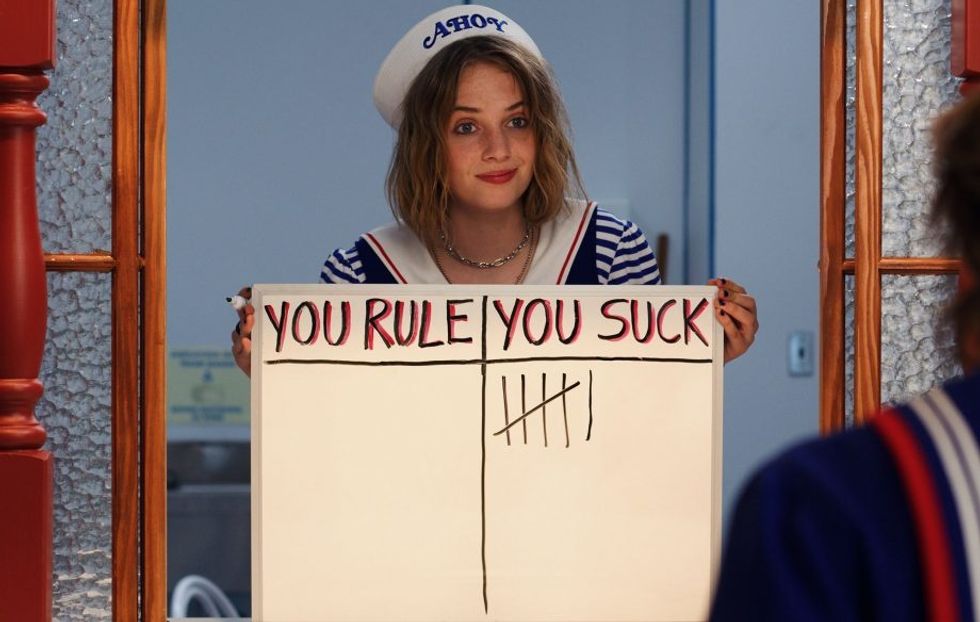 Netflix
Netflix
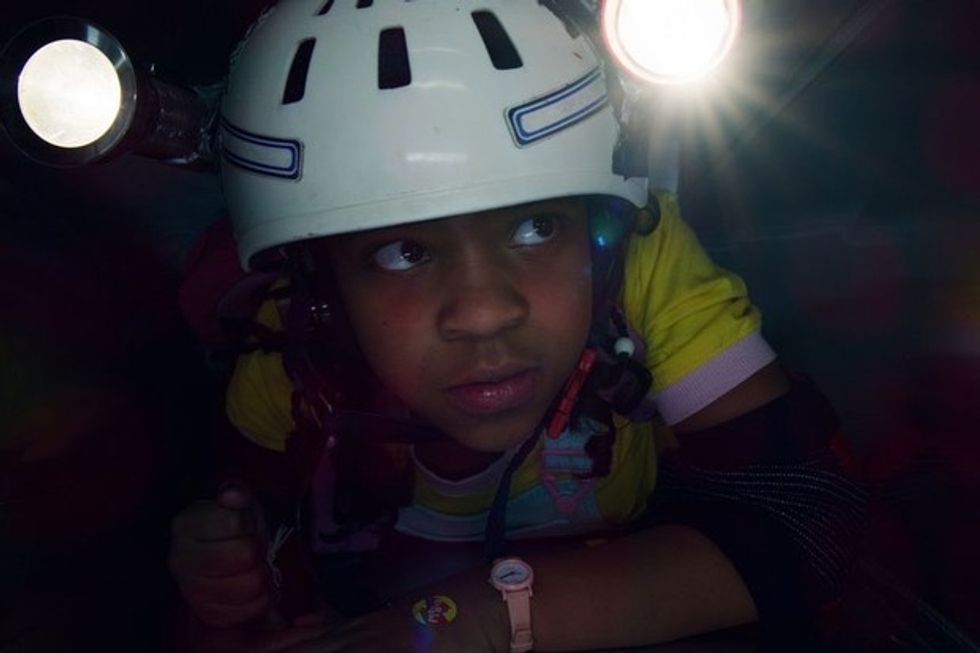 Netflix
Netflix
That doesn’t mean, however, that Stranger Things’ brand of feminism isn’t flawed. The Max and Eleven storyline is one of the show’s most obviously contrived efforts to pander to its online fanbase, and sometimes it falls flat. When Max and Eleven initially were pitted against each other, the show was critiqued for playing into tired tropes about girls getting into catfights over boys. In Season 3, Max takes Eleven under her wing, taking her shopping, showing her Wonder Woman comics, and giving her advice about boys—advice that’s mostly “cut them off and they’ll come crawling back.” While this advice is most certainly flawed, it’s also a realistic thing that a twelve-year-old might say to another twelve-year-old while they’re both still just learning the beginnings of how to communicate.
Stranger Things rarely sacrifices its desire to write realistic characters for attempts at writing perfect feminists or teaching life lessons. Sometimes this comes at a price. The phrase that Max repeats twice—”there’s more to life than stupid boys”—feels like an unnecessary act of telling rather than showing, and it’s a rare moment wherein the show breaks its mesmerizing flow to address the audience.
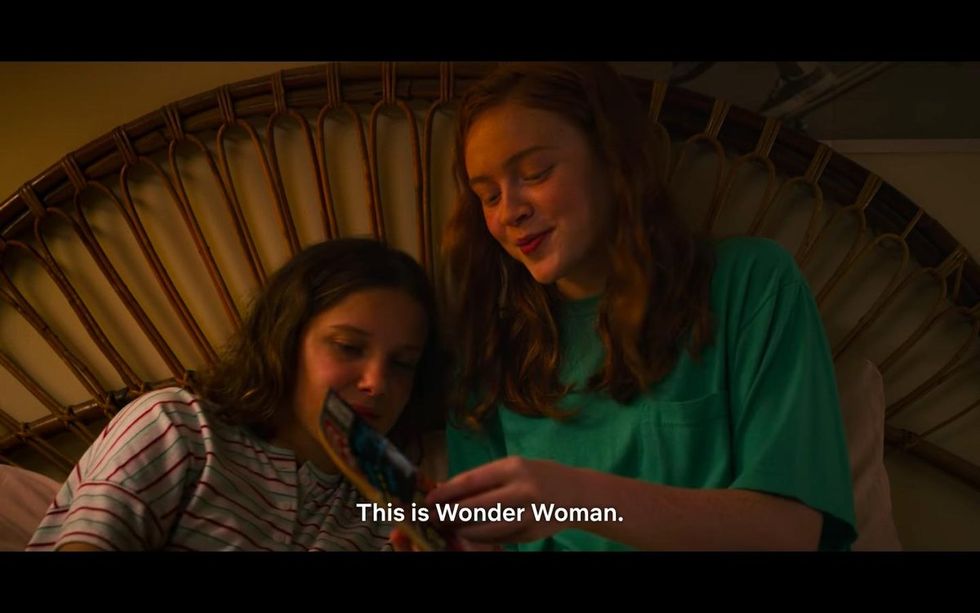 Netflix
Netflix
Overall, the show is best when it leaves behind identity politics and didacticism and instead writes its characters into rich and unexpected plots. Thankfully, Max and Eleven don’t spend all their screen time talking about or trying to get over boys. Instead, Eleven—using her powers to spy on other people—stumbles upon Max’s brother, Billy, committing a suspicious act, and the girls embark on a quest to figure out what’s going on. Of course, it leads them right to the source of the evil that’s plaguing Hawkins, and by the end of the season, their friendship is one of the most memorable relationships on the show.
Overall, the girls on Stranger Things are usually right—and the men are usually the ones who don’t believe them, until it’s too late. Nancy pursues a story about mutated rats until the sexist bosses at the Hawkins Post fire her, and then she keeps following it, despite the protestations of her boyfriend. Joyce insists that the magnets falling off her fridge mean something (and of course, they do), and Hopper denies it until it’s too late. In some ways, it feels like the writers are shouting, “Believe women!”
Its references to the #MeToo era don’t end there. Many of the Mind-Flayer’s actions eerily resemble potentially triggering sexual abuse throughout the show. In a disturbing motif, Billy whispers, “Just stay still, it’ll all be over soon” as he leans over the women he’s about to feed to the Mind-Flayer. Later, the sexist men who bully Nancy at the Post are also possessed, and one winds up pursuing her through an empty hospital—at least until she smashes his noses in with a fire hydrant. If Stranger Things is commenting on the epidemic of sexual abuse, it’s doing so in a way that grasps the monstrous nature of assault and the vastness of its trauma. That doesn’t mean its women are all innocent victims, though: it means that they’re sometimes violent, sometimes weak, and often flawed—like real, whole humans.
The Humanization of Villains
Despite its feminist leanings, Stranger Things refuses to demonize any of its main characters, instead prioritizing nuance over good/evil binaries. Sure, the men don’t believe the women; but often, it’s not hard to understand why.
Likewise, Hopper is one of the show’s most lovable and memorable cast members—but he’s also a cop with a propensity for brutal violence and a controlling streak that results in his policing every man Joyce speaks to throughout the show. Though it’s unfortunate that Joyce has begun to fall for the (definitely alive) Hopper, it makes sense, given the context of their relationship. Once again, realism gets prioritized over perfection in terms of the show’s relationships.
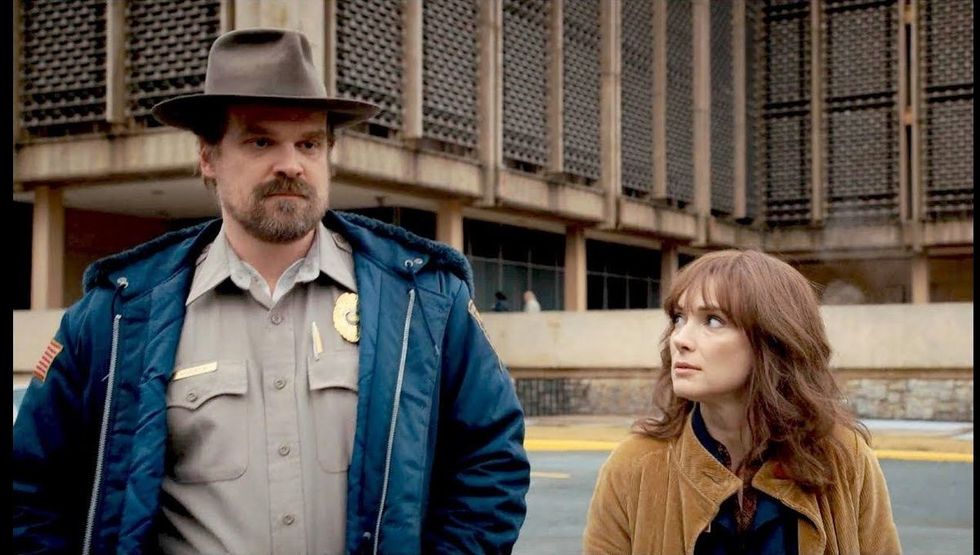 Netflix
Netflix
Then there’s the childlike and lovable Alexei, the Russian scientist at the helm of the supposedly evil mission that’s taken over Hawkins, who has joined Barb as one of the show’s most beloved fallen angels. His brief relationship with the eccentric ex-journalist Murray was one of the show’s sweetest moments, revealing that no one is too alienated to find true friendship.
It’s worth mentioning that Stranger Things humanizes almost all of its villains, with one major exception: the Russians, who remain lumped together as one malicious and shockingly inept invading force that’s determined to access the portal to the Upside Down that exists underneath Hawkins. Dozens of Russian soldiers die throughout the episode without fanfare, and maybe it’s also worth mentioning that sometimes the violence in the third season feels unusually excessive, dramatized, and glamorized, past the point of realism or necessity.
Still, sometimes all the gore serves a greater purpose. No character (aside from Eleven) is as complicated as Billy, who is given the best story arc of the third season. Abusive to Max even when not possessed by a demon, he soon becomes the Mind-Flayer’s primary host and embarks on a relentless killing spree.
Ultimately, in one of the most stunning scenes in recent TV history, Eleven follows him back in time and watches his happiest memory play out. In the memory, Billy is at the beach with his mother, riding the waves; it’s nothing more, nothing less. Then, as red lightning fills the skies, Eleven watches as his mother walks out on his family because of his abusive father, who later channels his rage at his son, who then channels it at his sister. The whole sequence is a powerful portrayal of the cyclical nature of inherited trauma and violence.
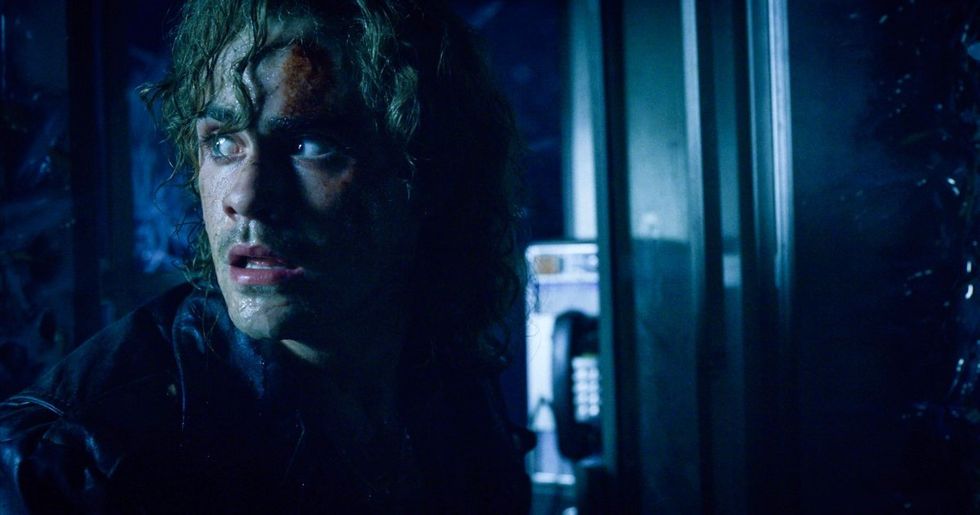 3Netflix
3Netflix
It’s also a grand, literary gesture. The ocean has long been used as a metaphor for purity, endings that are also beginnings, and timelessness, among other things. When Eleven goes back in time to that day by the sea, she sees Billy in his untainted form, outside of reality; and she understands that all the pain he’s inflicted has been part of an attempt to fight away the ghosts of his past.
Symbolism, What Symbolism?
In the midst of everything is the threat of the Mind-Flayer, who draws its power from the portal underneath the Starcourt Mall and who hangs at the center of the show’s web of storylines, always pulling the characters towards him like magnets. Though the Mind-Flayer and the Upside Down might symbolize a lot of things, the Mind-Flayer is ultimately not a clear symbol, just as Stranger Things doesn’t have one clear meaning. A lot of what happens on the show seems to occur merely for the sake of fun, or drama, or beauty. Sometimes one can imagine its writers asking, so how can we get a ferris wheel in here? How can we get fireworks? How can we get Dustin on top of a hill, sending radio waves out into the ether in vain hopes of getting a response? Though these scenes are effective, in that they work to craft the show’s dreamlike, psychedelic mood, they’re not exactly meant to prove something.
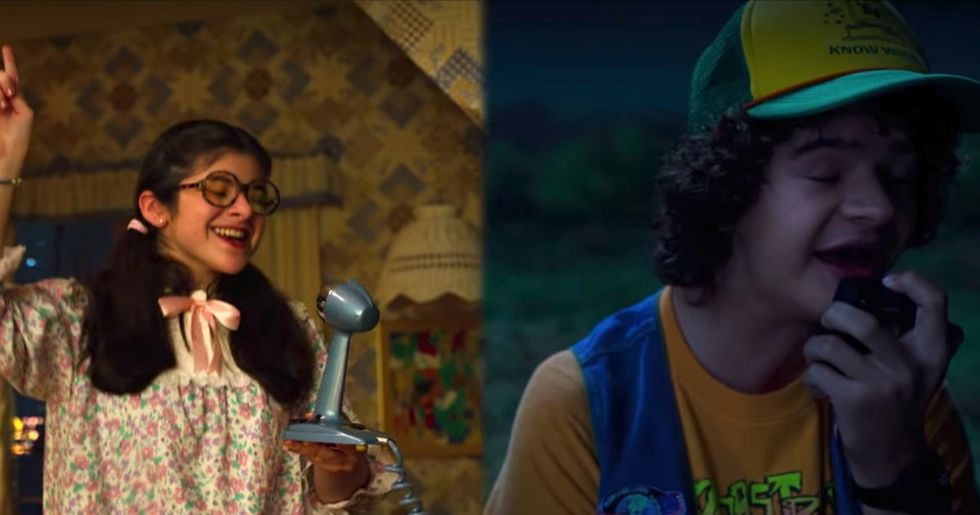 Netflix
Netflix
So it’s unlikely that the Mind-Flayer was supposed to represent something precise. On the other hand, it seems plausible that the Mind-Flayer’s presence could be hinting at a lot of things—most likely at the passage of time and the loss of childhood innocence. It could represent the suffocating evils of corporations and capitalism (already neatly illuminated by the Starcourt Mall, which destroys small businesses across town). It could also represent the threat of Russians, whether in the form of communism (as it was in the 1980s) or electoral interference in 2016, or a bit of both. It could represent the colonialist desire to gain ownership over all untouched or faraway regions. It could represent climate change.
It may well also represent the encroachment of patriarchal forces on women’s bodies and minds. Rarely have shows in this genre so clearly acknowledged the unique threats that women and girls face on the pathway to growing up, as well as the unique strengths that they possess. In the show, men launch initiatives that unleash monsters, but women are the ones who end up fighting them off. After all, Eleven is the one who the monster is seeking, as she is the only one who can destroy it.
It could be all of these things, or an amalgamation of all of them. In any case, the Mind-Flayer is literally some kind of evil mutation that stems from the government’s attempt to break into the Upside Down. As for the Upside Down itself? The trope of a glowing, monster-filled parallel universe that exists just a doorway away from our own is an old one. We saw it when Alice fell down the rabbit hole, when Dorothy rode a tornado to Oz, when Lucy walked through the wardrobe into Narnia, and when Harry slipped through Platform 9 and ¾. Many of our greatest stories are about kids slipping into these other worlds, fighting battles and falling in love, and growing up in the process.
On the whole, human beings have always believed in worlds greater than the one we can see, perpetually inventing invisible forces that explain away the messes, wonders, and contradictions that comprise our lives. From gods to fairies, myths to angels, devils to demogorgons, people have clung to strange stories and conspiracies since we started chatting around campfires at the dawn of time. Children believe these stories, and see shadows in their rooms; adults turn them into religions, or television shows.
Maybe these other worlds are really out there; maybe they’re just stories. Or maybe they’re tools, used to comprehend the things that are really, truly strange—like time, or like growing up.
- Netflix’s “Ted Bundy Tapes” Divides Viewers Between Terrified and … ›
- People Have One Criticism For Aubrey Plaza and Kristen Stewart in “Happiest Season” – Popdust ›
- Stranger Things Season 4: What Song Would Save You From Vecna? – Popdust ›
- Stranger Things Season 5 Is Coming – Popdust ›
- ‘Stranger Things’ Season 4 Is Here to Get Us Through 2020 – Popdust ›
- “Stranger Things” Actress Maya Hawke Releases Video – Popdust ›
- Politicians As Harry Potter Characters – Popdust ›
- Stranger Things 2 keeps its “strong female characters” apart from … ›
- A Feminist Critique of Netflix’s Stranger Things ›
- Feminism in Stranger Things: An Ode to ElevenFeminism in … ›
- We need to talk about race and gender in Stranger Things … ›
- How ‘Stranger Things’ Swapped Friendship For Cheap Feminism ›
- Stranger Things Is Great at Subverting Toxic Masculinity | The Mary … ›
- Stop Trying To Make Stranger Things About Feminism – NYLON ›
- 5 reasons why ‘Stranger Things’ isn’t the feminist show of our dreams ›
- Why Stranger Things’ Eleven Is the Feminist Hero We Need Right Now ›
- Stranger things is way, way more feminist than you think ›













